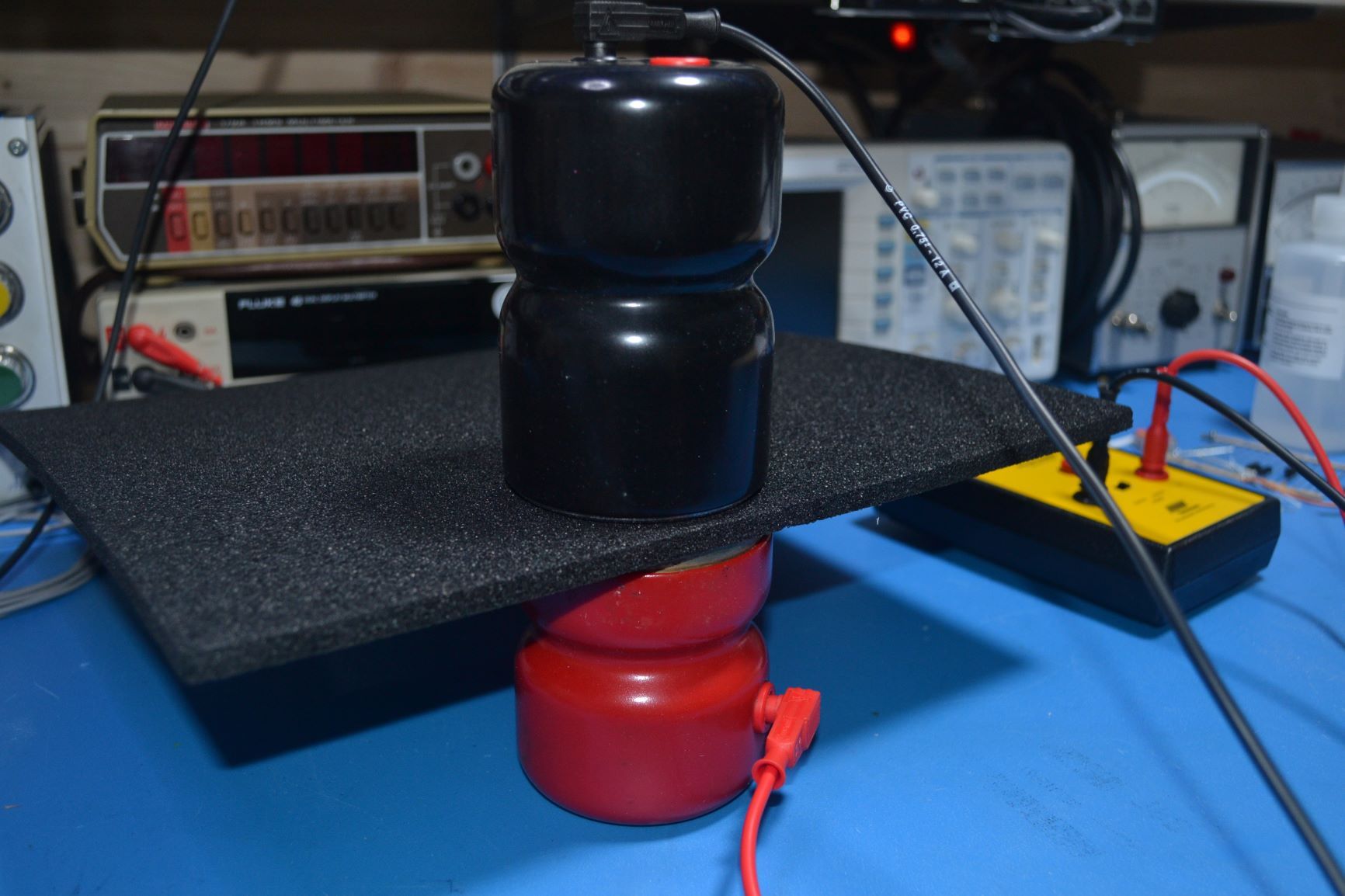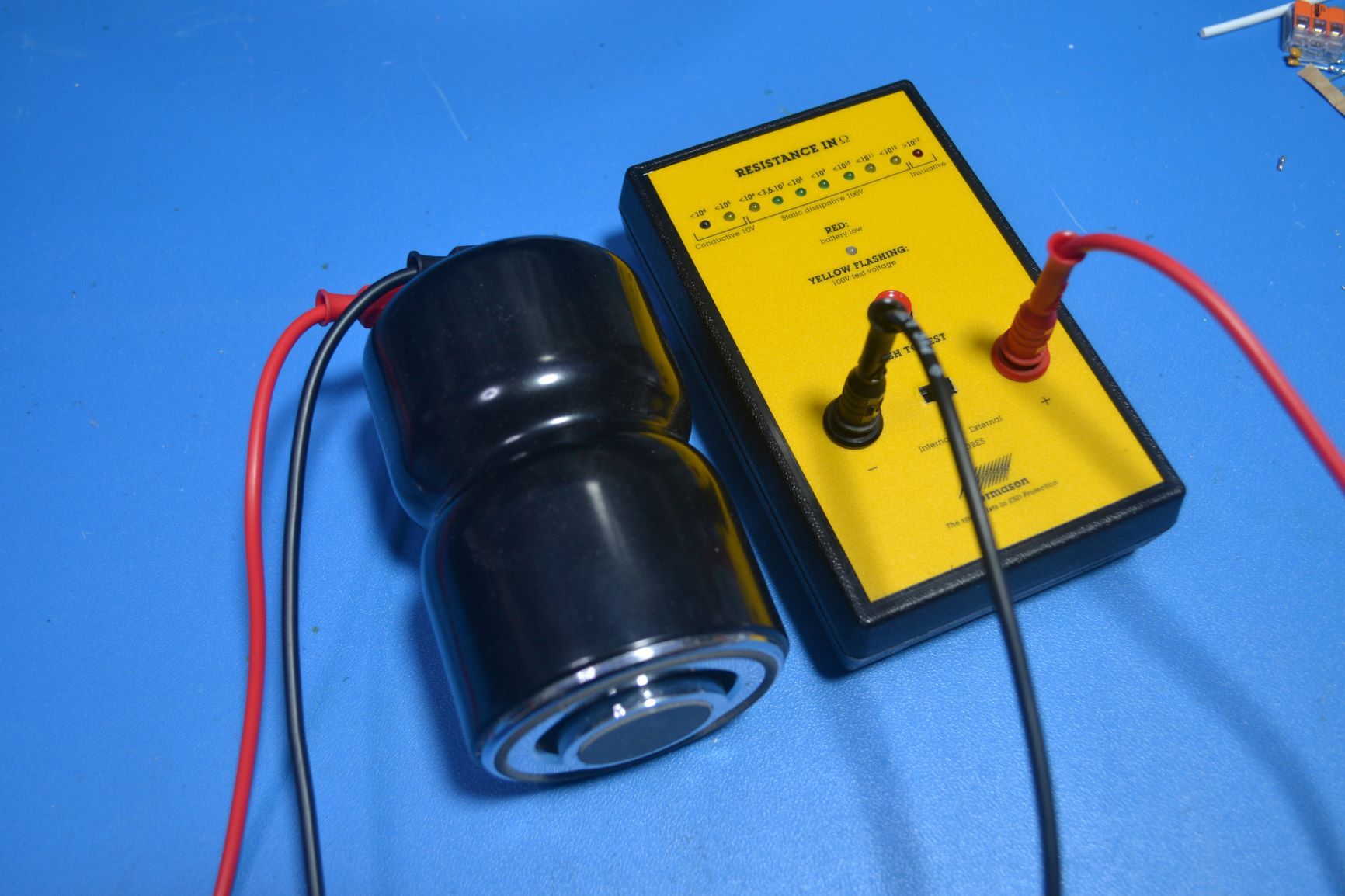I am measuring the surface (or sheet) resistivity of various materials that are commonly used to handle electronics. The instrument's accuracy is 10%. The last time it was calibrated was in 1999. More than 20 years ago. This is by no means an exact measurement. Rather a comparison of materials.
Methodological problems
I made all measurements with the concentric probe shown in the photo above. According to the manual, when the concentric probe is used the results should be multiplied by a factor of 10. To verify this I measured two different materials using the following methods:
1. Concentric Probe
2. Two probes 10cm apart
3. Two probes 20cm apart
4. Two probes sandwich configuration (see photo)
5. Square probe (on the device) weighted with a probe (2.5kg)
No mater what I tried the results were the same. I am a bit confused with the correction factor...

Finally the results
So I present the results without correcting for the concentric probe. The numbers are normalized to GΩ□ (gigaohms squared) for easier comparison.
Good >0.001GΩ□ <10GΩ□
- My ESD Matt < 1 GΩ□
- ESD Foam <0.035GΩ□
- Cheap Chinese ESD Matt <10GΩ□
- Digikey metallized bag inside <1GΩ□ outside <10GΩ□
- Digikey blue dissipative bag <10GΩ□
- Cutting mat ebay < 10GΩ□
- Printer Paper < 1GΩ□
- Wood (pine unvarnished) < 1GΩ□
Marginally good >10GΩ□ <100GΩ□
- My Floor < 100GΩ□
Marginally bad >100GΩ□ <1000GΩ□
- Reichelt pink dissipative bag <1000GΩ□
- Motherboard Cardboard < 1000GΩ□
The resistivity of some materials like parer depends also on humidity. The environmental conditions at the time of measurements were 21°C, 50%RH, elevation 625 m.
